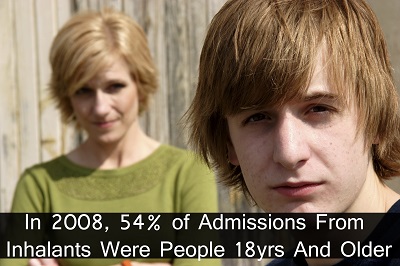College Student’s Death Sparks Renewed Warnings About the Dangers of Inhalants
The problem of inhalant abuse has surfaced again in a recent story from California, where nitrous oxide abuse is linked to the death of a college student. According to the Substance Abuse and Mental Health Services Administration (SAMHSA), over 1 million Americans abuse inhalants each year, and they’re keen to point out that the problem is far from confined to adolescents. In the wake of the incident, law-makers in California are looking at implementing new legislation and raising awareness to reduce the numbers of needless deaths from inhalant abuse. However, the strategy appears to be geared toward young people, when national research has shown that the majority of inhalant admissions are actually from adults.
The Recent Death
Nineteen-year-old Claremont McKenna College student Ali Mirza was found with nitrous oxide canisters, or “whippets,” in his dorm room when he died. He was rushed to Pomona Valley Hospital Medical Centre, after paramedics failed to revive him at the scene of the incident last month. He was pronounced dead at 2am on May 17th, and his funeral is scheduled for the June 15th. His family and friends will mourn his untimely passing, but the increased efforts of police officers and law officials to combat inhalant abuse may prove to have positive consequences for LA’s youth.
The Dangers of Inhalants
“Inhalants” is actually a fairly broad term to describe drugs that are “huffed” by users and many different substances could fall under the group. These include paint, marker pens, glue, air freshener, butane and substances like nitrous oxide. Despite the large number of substances used, most of them have similar effects to anesthetics and carry numerous potential risks. The most widespread (being a possibility with all inhalants) is sudden sniffing death syndrome, which basically results from a disturbance to the heart’s natural rhythm and is often fatal. Inhalants can also cause brain cell death, lung damage, short-term memory loss, and liver and kidney damage.
Nitrous oxide balloons (commonly known as “laughing gas”), in particular, pose a problem because the effect of a single “high” only lasts for five minutes or less. This means that users will generally repeat doses in a single evening of use, and this multiplies the potential for damage. When the user is “huffing,” he is depriving himself of oxygen, and repeated oxygen deprivation can lead to unconsciousness or—over time—brain damage.
The Response
The problem of inhalant abuse has been on the rise among California youths, according to Veronica De Alba (a deputy city attorney in LA), and this has led her to push for increased legislation to protect California adolescents. Police in the area are working on an ongoing 15-month investigation – entitled “Operation No Laughing Matter” – to curb the usage and availability of nitrous oxide. This has dramatically reduced the supply of the drug in the LA County area, but a continued effort is evidently required to prevent resurgence in usage down the line.
 Not Just Teens
Not Just Teens
Research from SAMHSA has shown that adults actually make up the majority of admissions to treatment facilities for inhalant abuse. The study showed that out of all admissions to treatment facilities for inhalant abuse, 54 percent were from people aged 18 or over in 2008. Admittedly, the majority of these admissions (52 percent) were from those in the 18 to 29 age group, but it still calls the adolescent focus of recent efforts into question.
While there is obviously a problem with inhalant abuse among teens, the problem is far from confined to them, and any public health-focused responses should take this into account. The sad truth is that inhalant abuse, like all drug abuse, may be commonly associated with troublesome youths, but it’s actually common in people from all walks of life. Some similar assumptions, which may be made about the race of inhalant abusers, were also addressed by the study and the results showed that the majority of the admissions were white males.
Broadening the Scope of Prevention and Education
Public awareness of the dangers of huffing will undoubtedly be improved by the recent story, but it’s important that you don’t mentally file it way as something that only really affects young people. The negative health impacts of huffing don’t discriminate based on age—they can affect any user—and research seems to show that adults are actually more likely to be heavy huffers. Broadening the scope of inhalant awareness campaigns to also appeal to adults initially seems like an unnecessary step, but statistics tell us that it’s just as vital as targeting teens and young adults.



